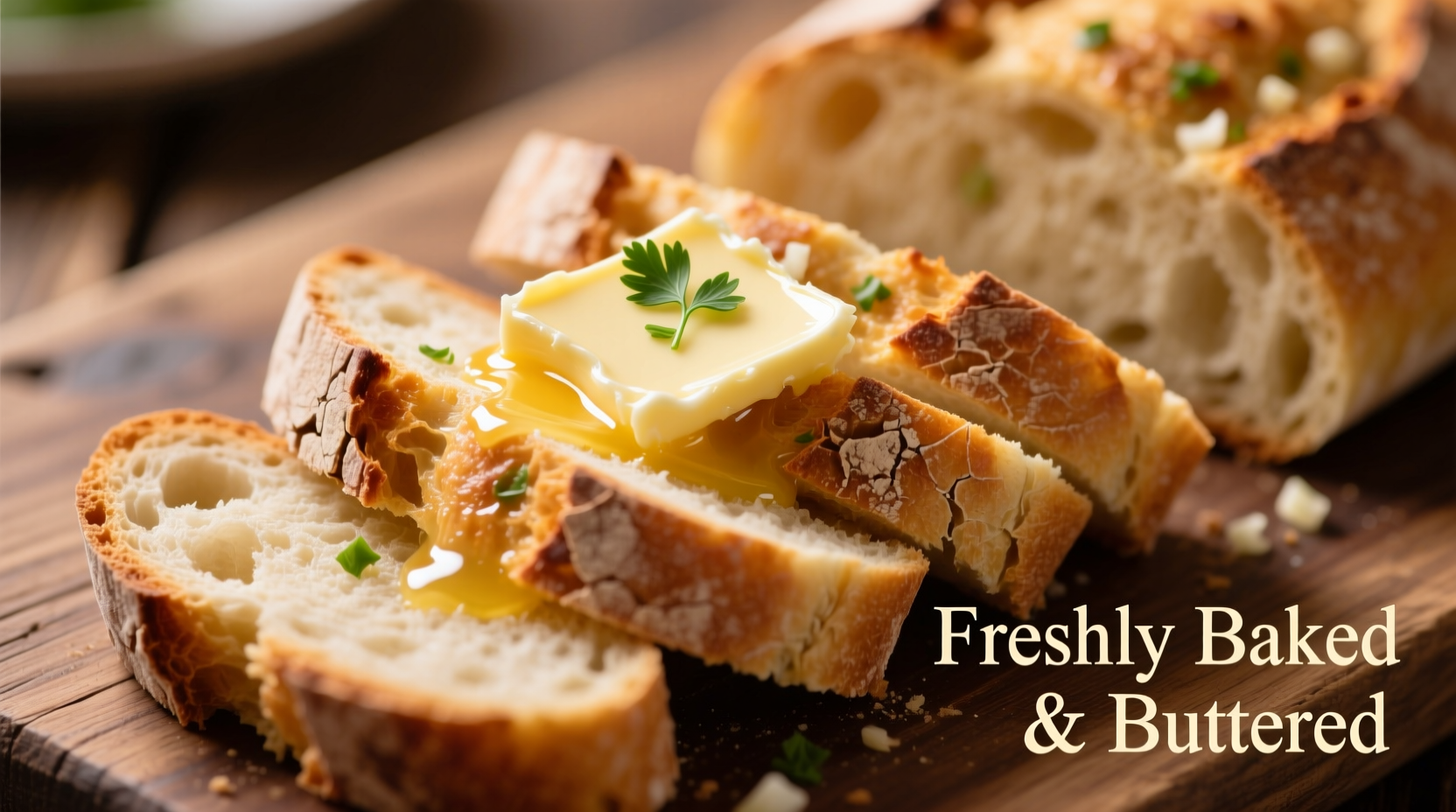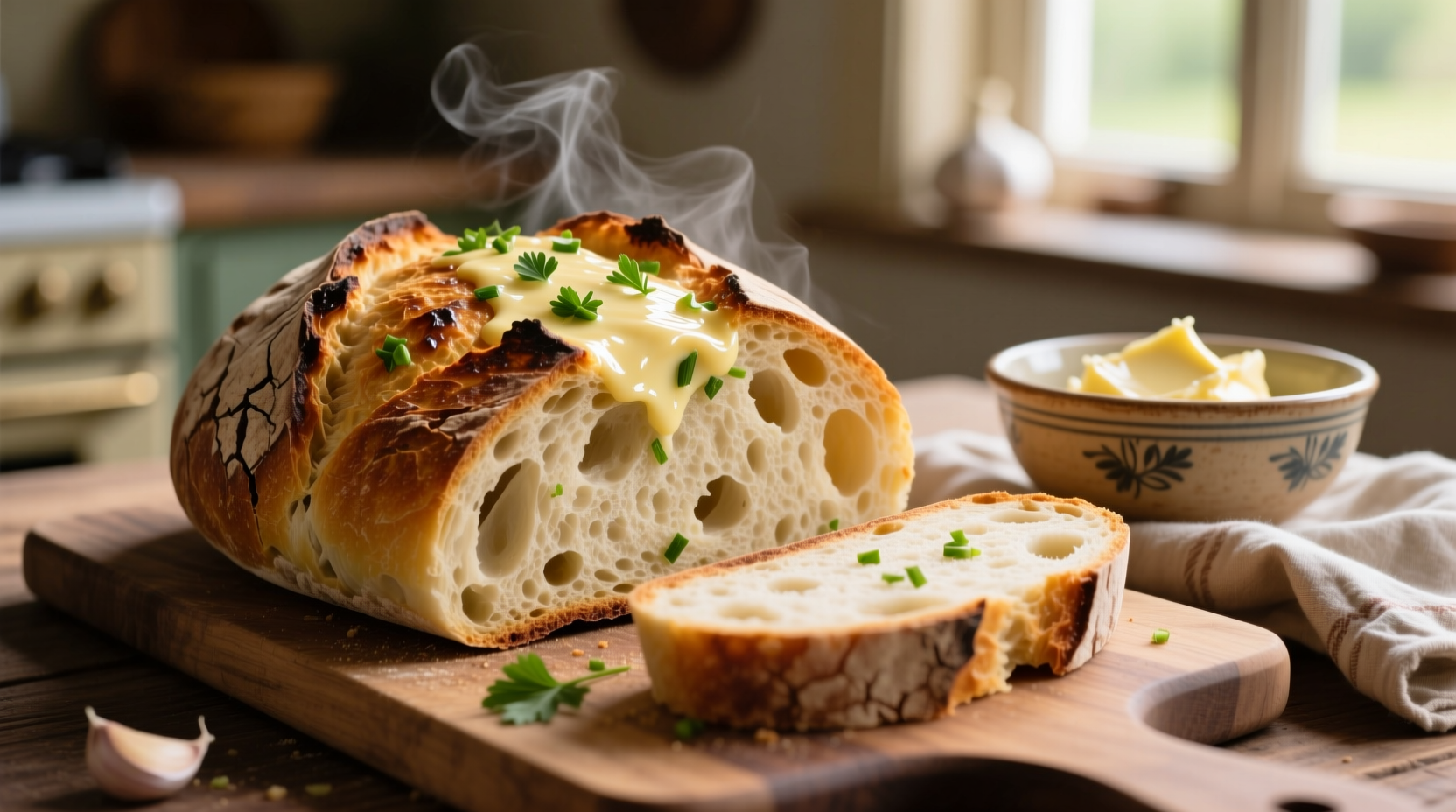Nothing beats the aroma of freshly baked sourdough garlic bread filling your kitchen. Unlike regular garlic bread, sourdough's natural fermentation creates complex flavors that pair perfectly with roasted garlic's sweetness. This guide provides everything you need to transform basic sourdough into exceptional garlic bread with professional results.
Why Sourdough Makes Superior Garlic Bread
Sourdough's unique properties create garlic bread that stands apart from standard versions. The lactic acid produced during fermentation tenderizes gluten while developing nuanced flavors that complement garlic's pungency. According to research from the USDA Food Safety and Inspection Service, proper fermentation reduces phytic acid by up to 60%, improving nutrient availability in your final product.
| Characteristic | Regular Garlic Bread | Sourdough Garlic Bread |
|---|---|---|
| Flavor Complexity | Simple garlic-butter profile | Layered notes from fermentation + garlic |
| Texture | Uniform crumb | Open crumb with chewy interior |
| Digestibility | Standard gluten structure | Predigested gluten from fermentation |
| Shelf Life | 2-3 days | 4-5 days due to natural preservation |
Essential Ingredients and Why They Matter
The magic of sourdough garlic bread starts with quality components. Professional bakers emphasize these non-negotiable elements:
- Mature sourdough starter - Use at peak activity (4-8 hours after feeding) for optimal rise and flavor development
- Fresh garlic - Roast whole cloves to mellow sharpness while preserving aromatic compounds
- Unsalted butter - Allows precise salt control; European-style (82% fat) provides superior browning
- High-quality olive oil - Adds moisture without compromising crust formation
Food science research from the Cornell University Food Science Department confirms that roasting garlic at 375°F (190°C) for 25 minutes transforms allicin into milder sulfur compounds, creating that signature sweet, nutty flavor without raw garlic's harshness.

Your Step-by-Step Sourdough Garlic Bread Journey
Preparation Phase (15 minutes)
- Roast 6 whole garlic cloves with olive oil at 375°F until soft (25 minutes)
- Prepare garlic butter: Mash roasted garlic with ½ cup softened butter, 2 tbsp olive oil, 1 tbsp chopped parsley, and ½ tsp sea salt
- Slice partially cooled sourdough loaf horizontally, creating top and bottom halves
Assembly and Baking (20 minutes)
- Spread garlic butter mixture evenly on both cut sides of bread
- Reassemble loaf and wrap tightly in foil
- Bake at 350°F for 15 minutes to melt butter and infuse flavors
- Unwrap and bake 5 more minutes for crispy crust
Troubleshooting Common Sourdough Garlic Bread Problems
Even experienced bakers encounter issues. Here's how to fix them:
- Soggy bottom - Place bread directly on oven rack during final baking phase to allow moisture escape
- Burnt edges - Reduce oven temperature by 25°F and extend baking time slightly
- Weak garlic flavor - Add ¼ tsp garlic powder to butter mixture for flavor reinforcement
- Dense texture - Ensure sourdough starter shows vigorous bubbles before using in original loaf
When Sourdough Garlic Bread Works Best (And When It Doesn't)
Understanding context boundaries helps you serve sourdough garlic bread successfully:
- Perfect pairings: Excellent with tomato-based soups, hearty stews, and pasta dishes
- Avoid with: Delicate seafood or light salads where strong flavors would overwhelm
- Best served: Within 2 hours of baking for optimal texture contrast
- Storage limitation: Freezing diminishes the unique sourdough texture—refrigerate instead for 3-4 day storage
Historical Evolution of Sourdough Bread Making
Sourdough's journey spans millennia, with techniques evolving to create today's superior garlic bread base:
- Pre-1500 BCE: Ancient Egyptians accidentally discovered wild yeast fermentation
- 1847: Gold Rush miners popularized "forty-niner" sourdough in California
- 1970s: Artisan bread movement revived traditional fermentation methods
- 2010s: Scientific understanding of microbiome benefits boosted sourdough's popularity
- Today: Modern bakers combine ancient techniques with precise temperature control for consistent results
Serving and Enjoyment Tips
Elevate your sourdough garlic bread experience with these professional techniques:
- Cut with serrated knife using gentle sawing motion to preserve airy crumb structure
- Serve immediately after baking for optimal crisp-tender contrast
- Pair with high-quality extra virgin olive oil for dipping alongside the bread
- Add fresh herbs like rosemary or thyme to the garlic butter for seasonal variations











 浙公网安备
33010002000092号
浙公网安备
33010002000092号 浙B2-20120091-4
浙B2-20120091-4